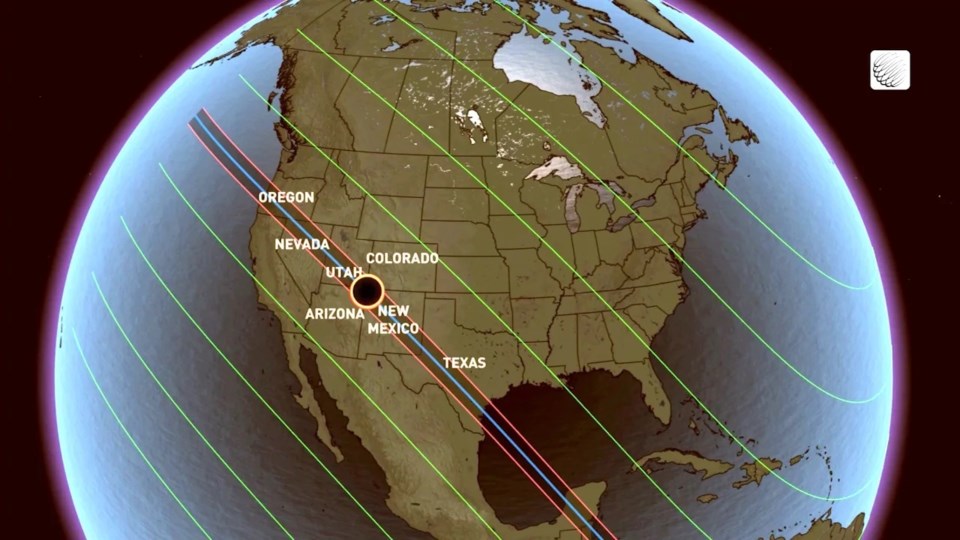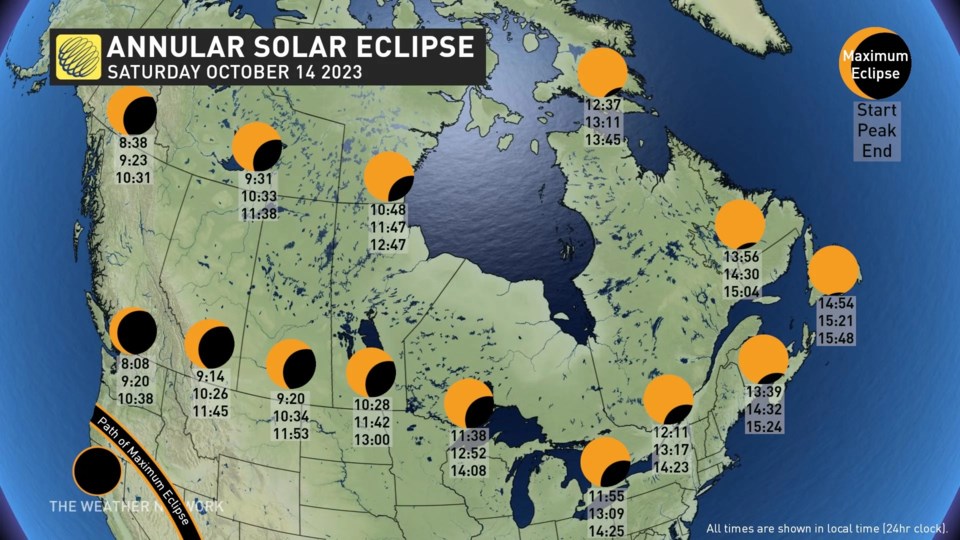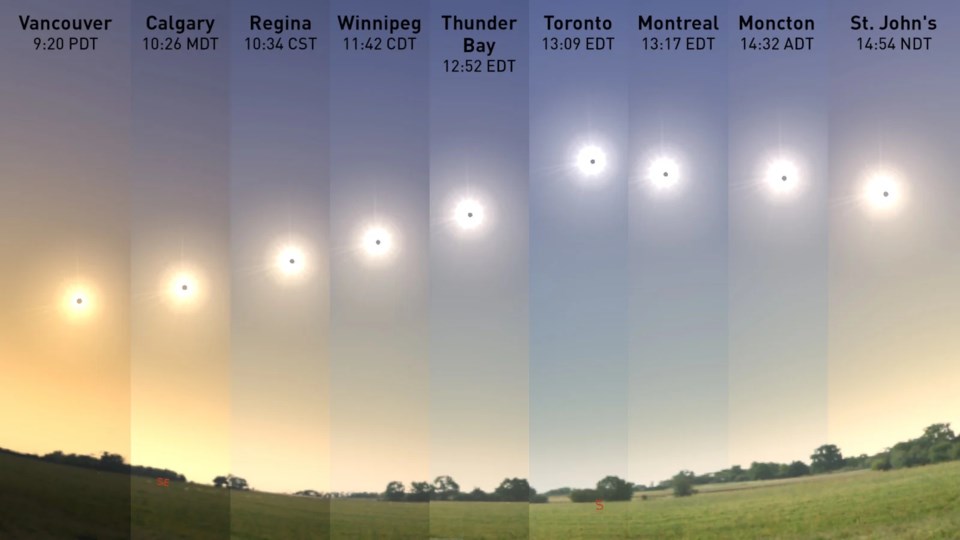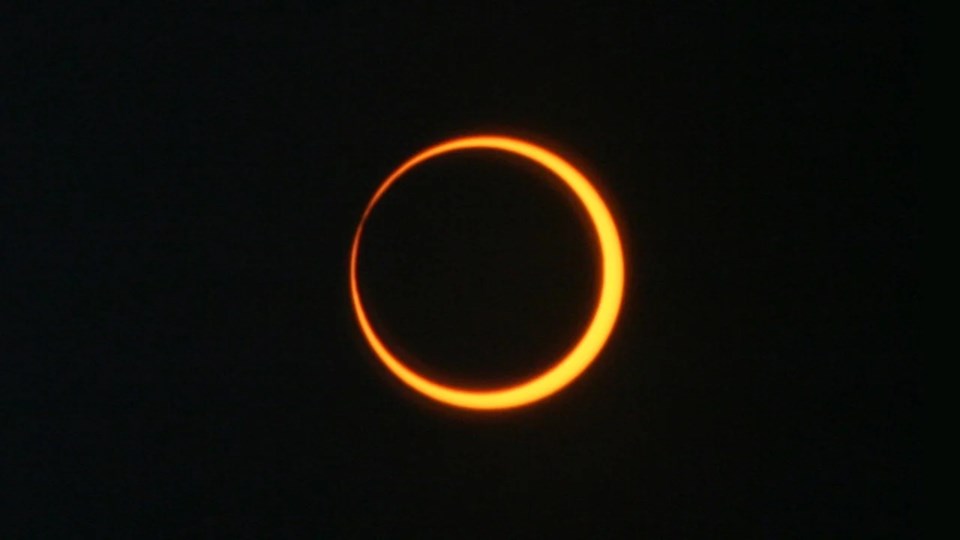Mark your calendars Canada, because this weekend, a celestial spectacle is set to grace the skies - the highly anticipated 2023 Annular Solar Eclipse is almost here!
According to The Weather Network, on Saturday, October 14, 2023, the Sun, Moon, and Earth will orchestrate a cosmic alignment, creating a visual treat for stargazers and astronomy enthusiasts alike. This rare phenomenon will deliver a captivating solar eclipse, and it's an event you won't want to miss.
Where to Witness the Eclipse
Those in the prime viewing zone, stretching from Oregon to Texas in the United States, and further south across the Yucatan Peninsula, Belize, Honduras, Nicaragua, Costa Rica, Panama, Colombia, and northern Brazil, a breathtaking sight awaits. Here, lucky observers will have a unique opportunity to witness what's known as an "annular eclipse" or a "ring of fire" eclipse.
Canada also gets a taste of this celestial delight with a partial solar eclipse that can be observed from coast to coast. For the best view in Canada, head to Vancouver Island or the south coast of British Columbia on the morning of October 14, where you'll see the Moon covering over 80% of the Sun.

However, it's important to note that the exact timing and coverage of the eclipse will vary depending on your location. The farther east or north you are, the later the event will commence, reach its peak, and conclude. In these regions, the Moon's coverage of the Sun will also be less.

Weather Plays a Crucial Role
As you prepare for this celestial event, keep a close eye on the weather forecast. Clear skies are essential for an unobstructed view of the eclipse. Make sure you're updated with your local forecast to ensure that you'll have the best conditions to witness this celestial phenomenon.
What Is an Annular Eclipse?
An annular solar eclipse occurs when the Moon, in its orbit around the Earth, does not appear large enough to entirely cover the Sun's disk. Instead, a striking "ring of fire" forms, where the outer edges of the Sun's disk remain visible around the Moon. It's a breathtaking display of the cosmos and a rare treat for sky gazers.
Safety First!
Watching a solar eclipse without proper protection can lead to permanent eye damage. During an annular or partial solar eclipse, it is crucial to use specialized solar viewing glasses. These glasses are constructed from cardstock and feature dark, silvery mylar lenses. When worn, you should only be able to see the Sun or a light source through the mylar, nothing else.

Avoid using ordinary sunglasses, neutral density or polarizing filters, smoked glass, photographic or X-ray film, or other makeshift methods. NASA recommends welding glasses with a Shade 12 or higher for safely viewing the Sun, though Shade 13 or 14 is preferable.
For those without proper solar viewing glasses, there are indirect methods to observe the eclipse, such as using a pinhole projection with white paper, or creating a solar projector using a cereal box, aluminum foil, and paper.
Don't miss this spectacular celestial event, and remember to take precautions to safeguard your eyes while enjoying the magic of the 2023 Annular Solar Eclipse.




